The invention of the first TV and its evolution
Today it is difficult to imagine that some more than a hundred years ago, humanity could do without television. This technique has become a familiar family member, entertaining, teaching and informing the rest of the household. In this regard, it will be interesting to find out who invented the first TV.
Content
Background to the emergence of television
It is very important to note that before the advent of the very first TV, the radio was invented. Here, opinions about its “founding fathers” differ: the domestic point of view calls the name radio inventor №1 A.S. Popova, and abroad the same problem was investigated by Marconi, Tesla, Branly.
On the question of who exactly invented the TV, you can not give a definite answer. Then you can call the name of Paul Nipkova.It was he who became the inventor of a special device - a disc named after him. The invention occurred in 1884. It was the radio signal and the mechanical scan that caused television to appear.

Few know what exactly Nipkova Disk It turned out to read the image line by line and pass on to the screen. Entrepreneurial John Byrd from Scotland in the late twenties of the last century and developed the first television based on this principle. He began to successfully implement the created project.
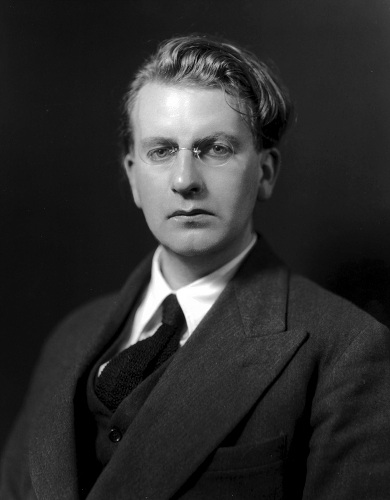
John logie baird
The leadership of mechanical television receivers from the corporation of the same name Baird was fixed for such devices until the 30s. The picture was clear, but without sound. However, the future was predetermined: it belonged to a cathode ray tube.
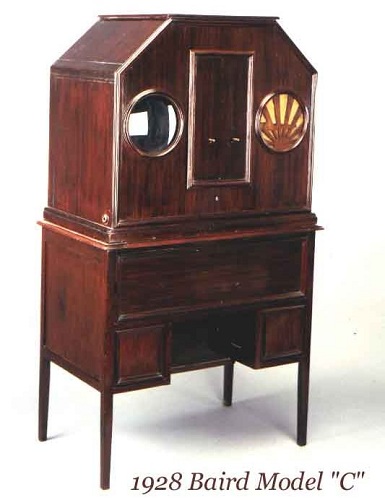
The invention and use of CRT
The global trend of technical superiority made the best minds work for the benefit of progress: work on the invention of the cathode ray tube (CRT) was carried out in many countries. Again it is worth highlighting contribution of Russian scientists - In 1907, Boris Rosing received a patent for a similar development. But he came to this, based on previous discoveries.
And here you can bring a brief insight into the history. It may be recalled that even the German Heinrich Hertz in 1887 discovered the influence of light on electricity: photo effect. Then he could not explain in what capacity and for what the photoelectric effect is needed. This was done for him a year later by Alexander Stoletov, who tried to construct a prototype of modern photocells when the electric eye device was invented. After him, many scientists tried to explain the nature of this phenomenon. These include Albert Einstein.
Other discoveries that influenced the future emergence of television are also important. For example, in 1879, the English physicist William Crookes creates substances (luminophores) that can glow under the influence of a cathode ray. And Carl Brown even attempted to create a future kinescope. Just because of this Brownian Kinescope and was able to justify the theory of obtaining the image of the already mentioned by us Boris Rosing. And in 1933, his student Vladimir Zvorykin created the first television set with an iconoscope, as he called the electronic tube.
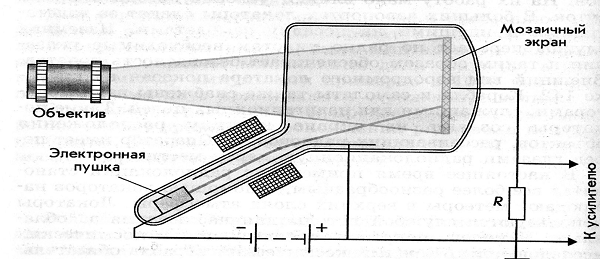
It Zvorykina and is considered the "father" of modern TV.Even the first TV in the world was created in his eponymous American laboratory (he was an emigrant who left the country after the October revolution). And in 1939, the first models for mass production appeared.

This led to the fact that in subsequent years the first television sets were actively conquered by the countries of Europe - first in Great Britain, Germany, and so on. At first, the entire image was transmitted in an optical-mechanical scan, but then, with improved image quality, the transition to a beam scan took place. in cathode ray tube.
How was the situation in the Soviet Union
The first television sets in the USSR appeared already in 1939 - the Leningrad plant Comintern began to produce them. The principle of operation consisted in the action of the Nipkov disk, and therefore such a prefix having a screen of 3 by 4 cm, it was necessary connect to the radio. Then it was necessary to switch the radio to other frequencies - as a result, it was possible to watch those programs that were broadcast in European countries.
It was also interesting that such first television sets could be made by everyone. Especially for this, the corresponding instruction was posted in the Radiofront magazine.
Regular telecast was started in 1938 by the Experienced Leningrad Center. And in the capital, television programs began to be broadcast in about six months. Interestingly, in each of the telecentres of these cities different decomposition standards were used, which required the use of certain models of technology.
- To receive broadcasts of the Leningrad television and radio center, the television device "VRK" was used (in deciphering - the All-Union Radio Committee). It was a device with a screen 130 × 175 mm, the work of the kinescope in which provided 24 lamps. Principle of operation - decomposition into 240 lines. Interestingly, in the thirties of the last century, 20 copies of such a device were released. Such equipment was installed in the houses of pioneers and palaces of culture for the purpose of collective viewing.
- Moscow TV Center was broadcasting with decomposition into 343 lines - it was perceived by the TK-1 devices. It already meant a more complex device with 33 lamps. Only in 1938, 200 of them were produced, and by the beginning of World War II - 2 thousand copies.
The research of a man’s engineering thought didn’t stop there, but sooner or later simplified models had to appear.For example, at the Leningrad plant Radist in 1940, a serial version of the 17TN — 1 was proposed, which could reproduce the programs of both Leningrad television and Moscow. Production was started, but before the outbreak of hostilities, only 2 thousand pieces had left.
You can also give an example of a simplified model called "ATP-1" (Subscriber television receiver number 1) - it was the prototype of the modern cable subscriber television. He was released by the Alexander Plant before the war.
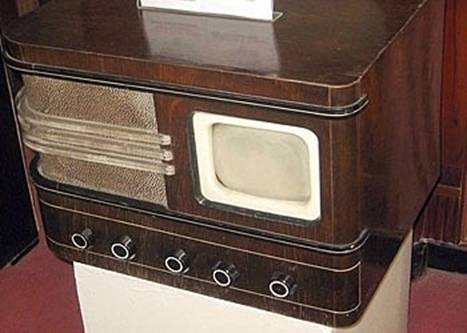
When TV became color
All of the above tells about the transfer of black and white images. Scientists continued to work on making it colored.
When did the color TVs appear? For the first time they began to think about it even during the mechanical television receivers. One of the first developments is represented by Hovhannes Adamyan, who in 1908 received a patent for the person who can transmit signals. two-color device. Not to mention John Loagy Brad, the inventor of the mechanical receiver. It was in 1928 that they assembled a color TV, which consistently transmitted three images using a blue, red and green filter.

But it was only trying.This jump in the development of color television occurred after the end of the Second World War. Once all the forces were thrown into civilian production, this inevitably led to progress in this area. It happened in the USA. The use of decimeter waves to transfer the image.
This led to the fact that already in 1940, American scientists presented the Triniskop system. It was notable for the fact that it used three kinescopes with different colors from the phosphor glow, each of which reproduced its own color image.
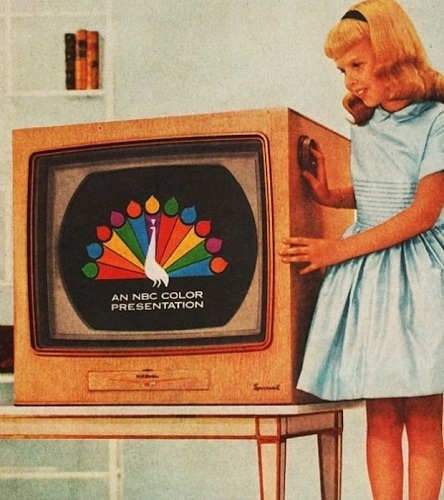
As for domestic expanses, in the USSR similar technical developments began to appear only in 1951. But a year later, ordinary viewers could see a test color broadcast.
In the 70s, television became a familiar technical device in many homes around the world. Soviet space was no exception, the only thing worth noting: color television receivers remained in our country scarce almost until the end of the eighties of the last century.
Progress does not stand still
The inventors tried to improve the result - so in 1956 a remote control appeared. Who created such a useful device? It was designed by Robert Adler in 1956. The principle of his work was to transfer ultrasound signalsthat have been modulated by the appropriate commands. The very first remote could only control the volume and switch channels, but at that time it was a pretty weighty statement.
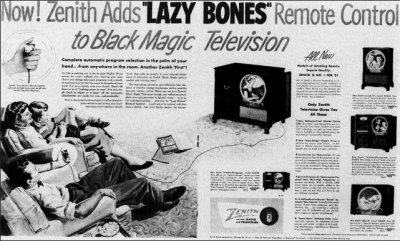
Concerning infrared version of the remotethen it appeared in 1974 as a result of the development of Grundig and Magnavox. His birth was dictated by the appearance of teletext, which required more precise control, which means that buttons appeared. And already in the eighties, the remote control is additionally used as an analogue of a gamepad, because then televisions also became an additional monitor to the first consumer computers and game consoles.
With the advent of VCRs, there is a need for additional implementation of the component video input (except for the existing analog antenna).
With the beginning of the twenty-first century, the kinescope era came to an end — plasma panels began to appear and LCD TVs. And by 2010, the kinescopic models were almost driven out of the market by flat LCD and PDP devices. Many of them can connect to the Internet and even demonstrate the ability to view 3D content.
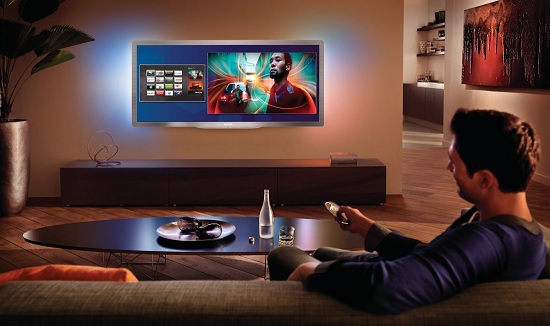
Today's television receiver is a little like its progenitor - it has functions home media centerwhile maintaining the functions of viewing terrestrial and cable television. And this is not to mention the very quality of the image transmitted in the standard of high (and in top models and ultra-high) clarity.

/rating_off.png)












